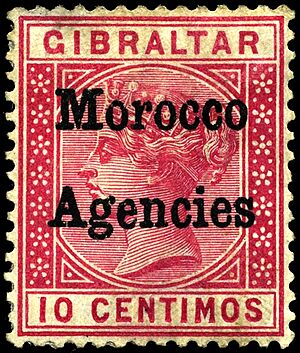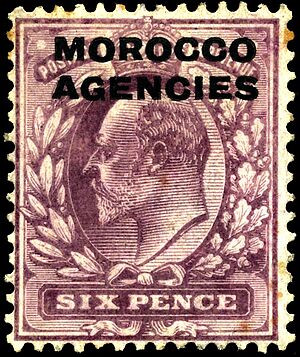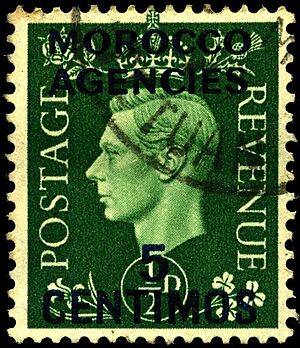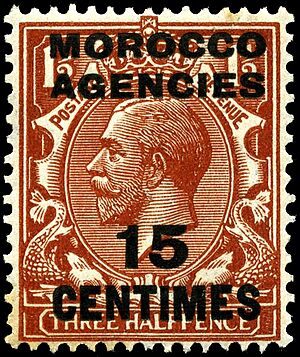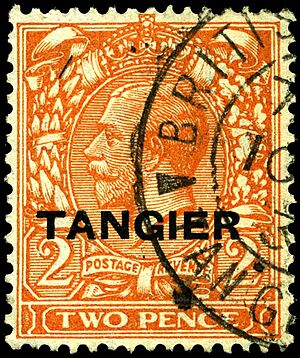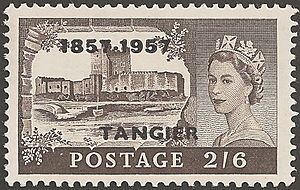British post offices in Morocco facts for kids
The British post offices in Morocco were special post offices. They were also called the "Morocco Agencies". These offices were run by Gibraltar and later by the United Kingdom. They helped send mail in Morocco for many years.
Contents
First Post Office in Morocco
The very first British post office in Morocco opened in Tangier in 1857. At first, mail from Tangier was sent to Gibraltar. There, it received a special mark called "A26".
Tangier's Own Postmark
By 1872, Tangier got its own postmark. This mark was put next to the stamps. This allowed the Gibraltar mark to still be used on them. To know for sure if a British stamp was used in Morocco, you often need to see the whole envelope.
Using Gibraltar Stamps
Since Gibraltar controlled these offices, they started using Gibraltar stamps. This change happened on January 1, 1886. More post offices opened in Moroccan port cities in the 1880s. Later, offices opened inland in Fez (1892) and Meknes (1907).
Special "Morocco Agencies" Stamps
Starting in 1898, the stamps got a special message. It was printed on top of them, saying "Morocco / Agencies". This printing is called an overprint. It was first done in Gibraltar. Later, it was done in London. This led to different styles of the overprint.
British Control of Post Offices
On January 1, 1907, the British Post Office took over. They ran these offices until Morocco became independent in 1956. From then on, all stamps were British stamps with an overprint. These stamps were made for three different types of money.
British Currency Stamps
Stamps using British money were available at all offices. They were mainly used for sending packages. Later, they were also used for airmail. Both regular and some special stamps were overprinted. They all said "MOROCCO / AGENCIES". This continued until 1936. After that, regular British stamps were used without an overprint. Then, in 1949, stamps were overprinted again. This was for use at Tetuan, which was the only office left besides Tangier.
Spanish Currency Stamps
Stamps for Spanish money were also available everywhere at first. But after the French Zone was created, they were only used in the Spanish Zone. The overprint was similar to the British ones. But it also had the value in Centimos and Pesetas. Many types of British stamps were overprinted this way. The last ones were from 1956. All of these stamps were stopped from being sold on December 31, 1956.
French Currency Stamps
Stamps for French money started in 1917. They were used in the French Zone. These stamps were used until January 8, 1938. Then, they were no longer sold. The overprints were like the Spanish currency ones. However, fewer types of these stamps were made.
Tangier's Special Stamps
The Tangier International Zone got its own special stamps. This started in 1927. British money was used in Tangier. So, the overprint simply said "TANGIER". This continued until 1956.
On April 1, 1957, a special overprint was added. It said "1857-1957". This celebrated 100 years of the post office. But these stamps were only sold for a short time. The Tangier post office closed on April 30, 1957. The stamps were then taken off sale.
See also
- List of postal codes in Morocco
- Postage stamps and postal history of Morocco
- David A. Stotter


